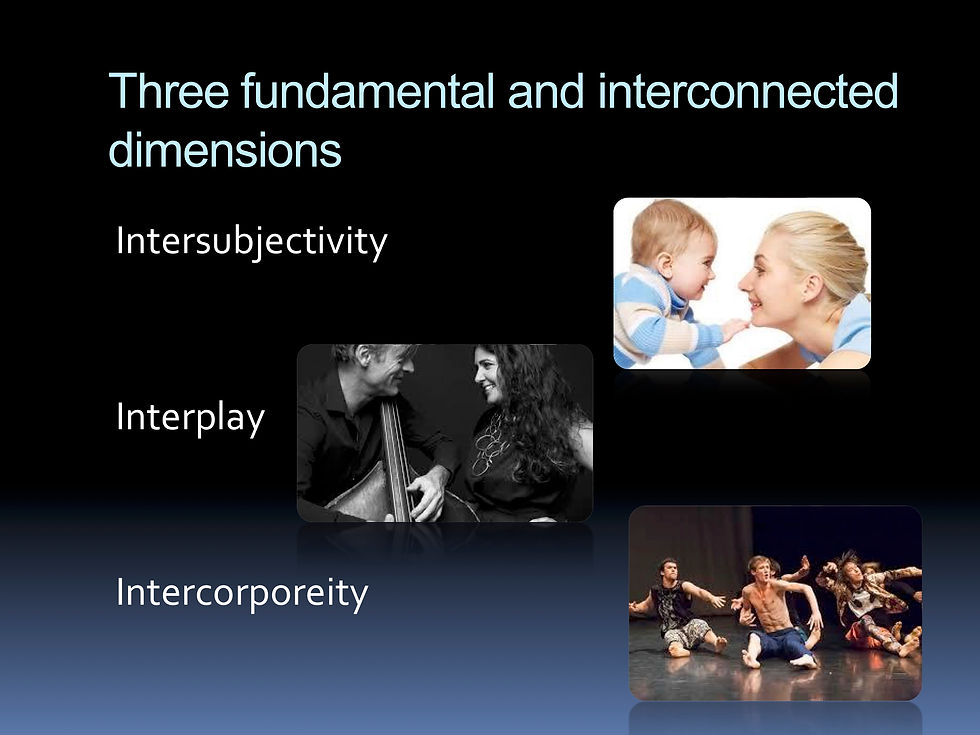
The Midifly System: from play to the interplay, a new road to intersubjectivity
La musicoterapia mira a sviluppare le funzioni potenziali e/o residue delle persone. Possono migliorare l'integrazione intra- e inter-personale e di conseguenza possono migliorare la qualità della vita grazie a un processo preventivo, riabilitativo o terapeutico. Esistono diversi approcci alla terapia. MidiFly® rappresenta un nuovo approccio allo studio dei comportamenti e delle possibili soluzioni terapeutiche. In particolare, è stato testato in pazienti con problemi cognitivi come l'autismo e altre malattie degenerative. Nel set di musicoterapia il midifly è al centro. Il paziente e l'operatore possono interagire agendo sulla griglia virtuale. La griglia può essere utilizzata su entrambi i lati. Questo fatto consente agli utenti di rispecchiarsi e avviare un fruttuoso dialogo sonoro. MidiFly® per il suo utilizzo necessita di una adeguata formazione. Al termine della formazione l'operatore riceve una certificazione che lo abilita all'uso del MidiFly® utilizzando il protocollo "MidiFly System".
Il "MidiFly System" è un protocollo creato dal Dr. Stefano Navone,
dalla Dr.ssa Mariangela Lippolis e dal Dr. Stefano Ianne.
Tutti i nostri test e studi vengono eseguiti nella nostra sede di Valencia (ES)
e presso l'Istituto Inartesalus di Schio (Italia)
Gli studi sono condotti e coordinati dal dottor Stefano Navone.
.
"Midifly technology: a new relational dimension in rehabilitation with music"
(Navone S. - Lippolis M. - Ianne S.)
Con l'avvento di potenti strumenti informatici basati su sensori e sistemi musicali interattivi in tempo reale, gradualmente è stata dedicata maggiore attenzione alla combinazione della musicoterapia con la sonificazione, in particolare nella riabilitazione neurologica. L'assunto teorico di base degli autori è che l'impostazione della Musicoterapia attiva consista nella continua correlazione di tre dimensioni relazionali: interazione come interazione sonora, intercorporeity come mirroring del corpo e intersoggettività come condivisione di stati emotivi.
Il "MidiFly System" ideato dagli autori si pone l'obiettivo di diventare il punto di riferimento tecnologico di questa visione. MidiFly® fornisce la proiezione di una griglia virtuale a infrarossi su cui il paziente e il terapeuta, uno di fronte all'altro con semplici movimenti della mano, possono simultaneamente produrre suoni predefiniti sfruttando allo stesso tempo la simmetria e il mirroring del corpo.
Il primo passo è stato lo studio della fattibilità e l'accettazione di questo approccio in un'indagine clinica preliminare con pazienti con ictus e neglect. Ci siamo accorti che le possibilità di applicazione di MidiFly® sono numerose, in particolare con pazienti con lesioni cerebrali acquisite e deficit motori, prendendo in considerazione le basi teoriche delle interazioni cross-modali e la rappresentazione spaziale dell'altezza del tono.
Poiché con MidiFly® il musicoterapista ha la possibilità di impostare la composizione della griglia in molti modi, offre anche la possibilità di combinare la riabilitazione funzionale e la dimensione relazionale in una terapia integrata e personalizzata che si concentra anche sul recupero delle capacità motorie, sincronizzazione e consapevolezza spaziale.




The Claudio Ciai Foundation is a non-profit based in Italy that aims to assist with the ongoing support and recuperation of victims suffering brain injuries or permanent disabilities as a result of accidents on the road and/or the workplace. Key goals include:
-
Providing a toolkit of valuable information and resources for families and friends, following four years of intense research and trial-and-error to find a cure and the most humane care possible for Claudio;
-
An information center sourcing and sharing news about innovative research, new technologies, hospitals and assistance centers in Italy and other countries across the globe. Assistance in understanding victim rights and associated compensation as well as financial support from the foundation as available and needed for victims in need;
-
Act as a helping hand and empathetic guide in moments when tragedy strikes to help families and friends of victims identify best solutions and next steps in moments of need, particularly when a loved one is still alive but without the ability to be autonomous.
The foundation is born from the reassurance that even the woes of sadness and suffering can be transformed into a positive energy of love and kindness, providing a beacon of hope for those in need in their darkest moments.







